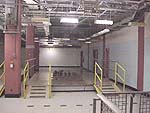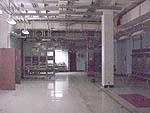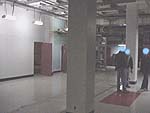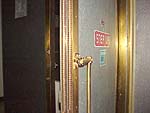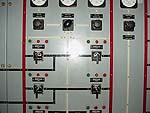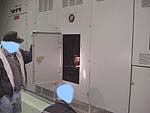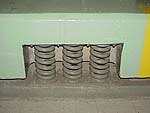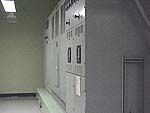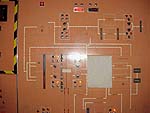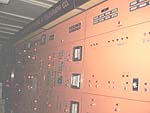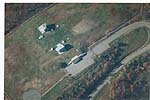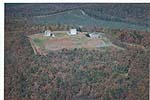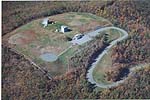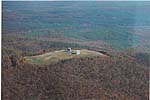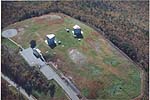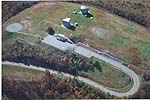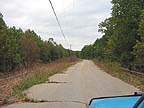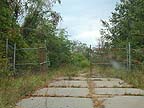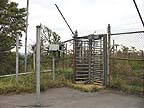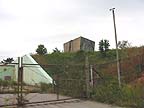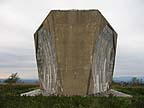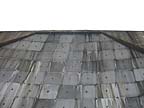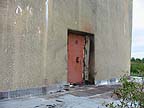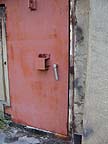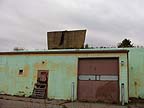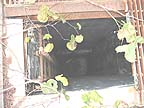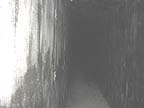AT&T Troposcatter Relay Station
Buckingham County, Virginia
Situated atop Spears Mountain, about 11 miles west of the town of Buckingham in Virginia's rural Buckingham County,
near the geographic center of the state,
this nuclear-hardened radio communications facility began operation around 1964-1965.
It is no longer in service.
The station, called "Buckingham" by AT&T, was not a part of the company's commercial long-distance network; it existed solely to provide national-security communications.
It was a relay point linking two similar, but larger and more elaborate installations in Virginia and North Carolina, and was part of network of five "Project Office" stations in the mid-Atlantic region.
These stations used a radio technology known as "tropospheric forward scattering" (usually shortened
to "troposcatter") to communicate over distances greater than would be possible using conventional terrestrial
microwave links.
The most prominent physical features at Buckingham are two prismoidal concrete structures, located in a cleared area
at the top of the mountain, and visible from nearby roads.
Recessed into the the north and south faces of these structures are metal "dish" reflectors roughly 30 feet in diameter.
One reflector in each direction was for transmitting, and the other for receiving.
Each radio beam, outgoing or incoming, originated or terminated at a horn-type microwave antenna embedded
in a concrete block near ground level in front of the corresponding reflector.
Buckingham's only other known communications medium is a multi-pair aerial telephone cable.
The installation's other major structure is an underground building of undetermined size and configuration,
covered by several feet of earth and entered through one or more doors in a concrete retaining wall.
One of the entrances is located inside an auxiliary building, probably the site's security office, which abuts the retaining wall.
Another door, probably an emergency exit, is built into the side of one of the reflector structures.
Buckingham is also equipped with small, lighted asphalt parking lots inside and outside the perimeter fence,
and a circular asphalt helipad.
A water well is located some distance outside the fenced compound, along a public road.
Despite its remoteness, Buckingham was protected by an extraordinary degree of physical security.
A few feet inside the chain-link fence which surrounds the mountaintop, there is an electronic intrusion-detector fence.
Access by personnel to the fenced compound is controlled by a turnstile gate,
under the surveillance of a closed-circuit TV camera.
The vehicle gate has a magnetic switch to detect when it's opened, and intercom boxes are located near both gates.
When the facility was in operation, it was guarded by an armed security force.
No official information is available describing the mission of Buckingham and its sister "Project Office" facilities.
The terminal stations contained AUTOVON switches and had terrestrial microwave links to other AT&T
facilities, but it is now believed that AUTOVON switching was not the stations' primary mission,
and that the AUTOVON lines and equipment were installed to serve another activity housed at the sites.
Most likely, these facilities supported a highly-classified federal Continuity of Government (CoG) program.
Images
(photographed May 22, 1999)
Select an image to view a larger version
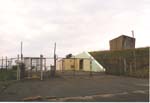
Overall view, looking south |
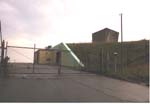
Vehicle gate, bunker entrance,
and east troposcatter reflector |
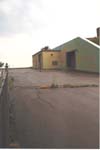
Bunker entrance |

CCTV camera, turnstile,
and vehicle gate |

CCTV camera and turnstile |
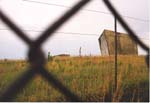
West troposcatter reflector
east reflector in background |
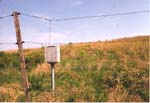
Proximity-sensor fence,
note railing in center background |
Contributed Images - Exterior
Select an image to view a larger version

Spears Mountain, from a distance |

Sign at entrance to access road |
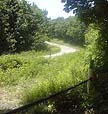
Access road |
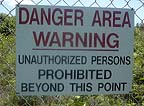
Sign on perimeter fence |

Junction box for proximity-sensor fence |

View from mountaintop |

Troposcatter reflector |

Troposcatter reflector |
Return to...
Updated on November 2, 2003 at 07:29 by Albert LaFrance















